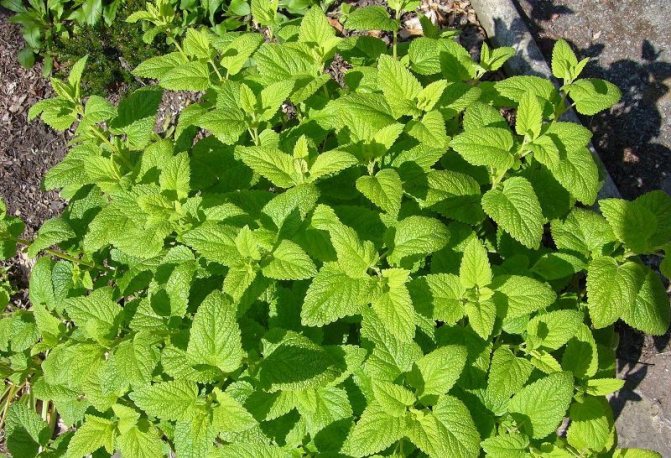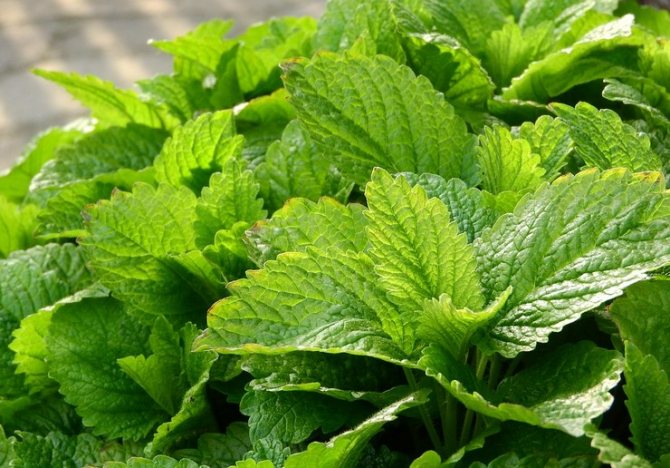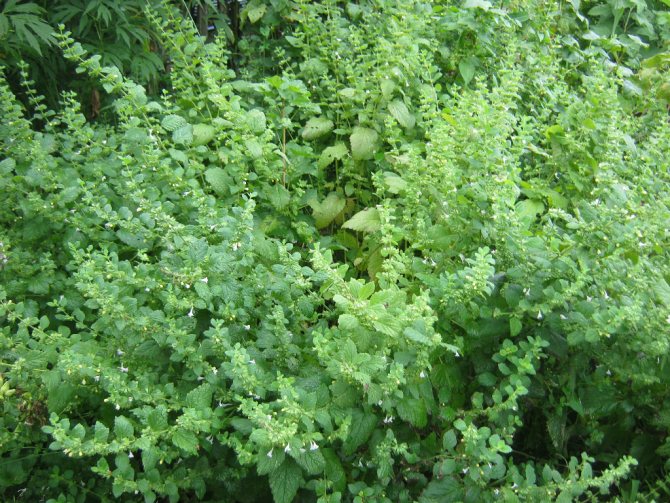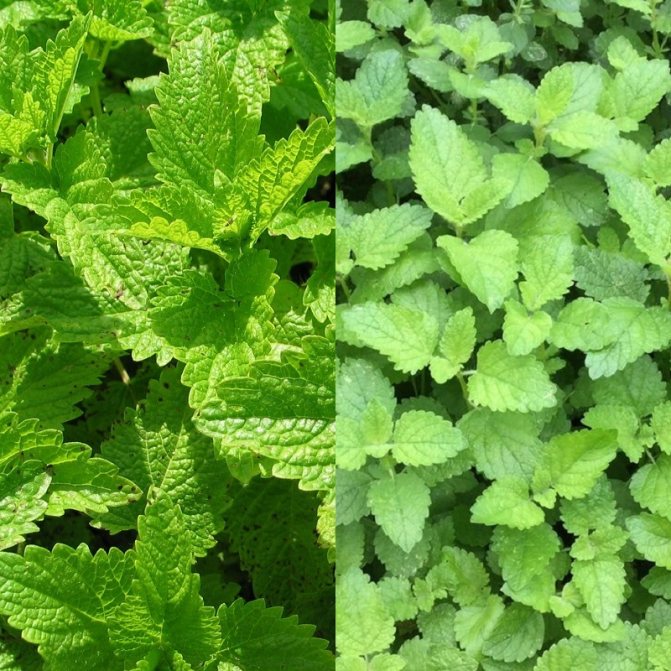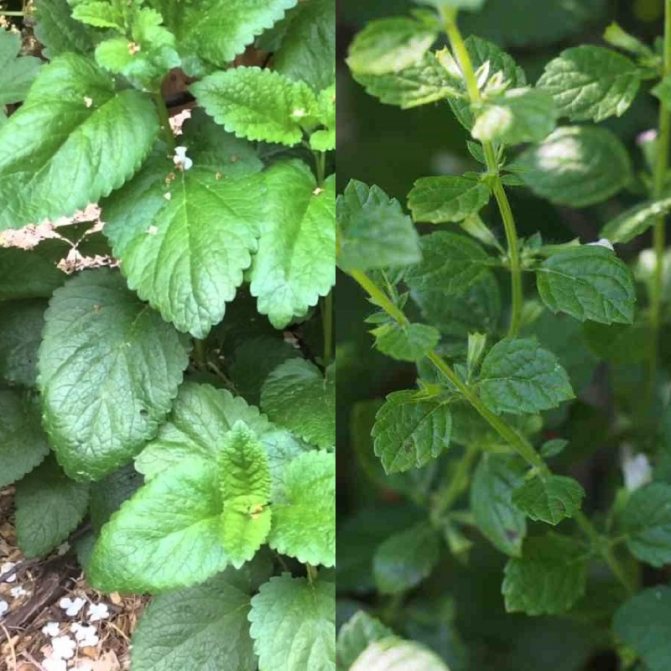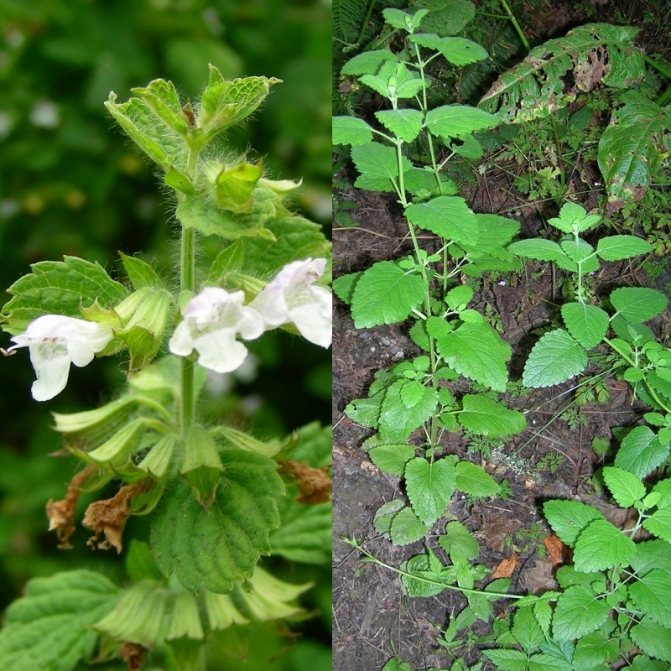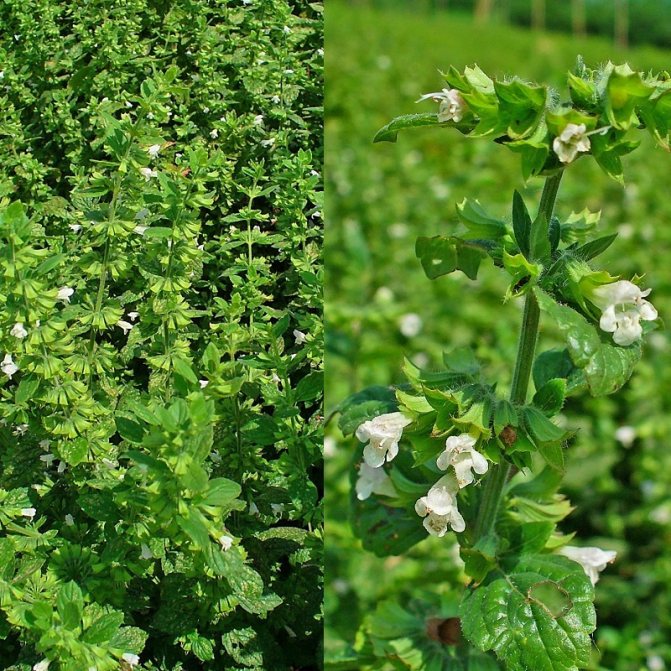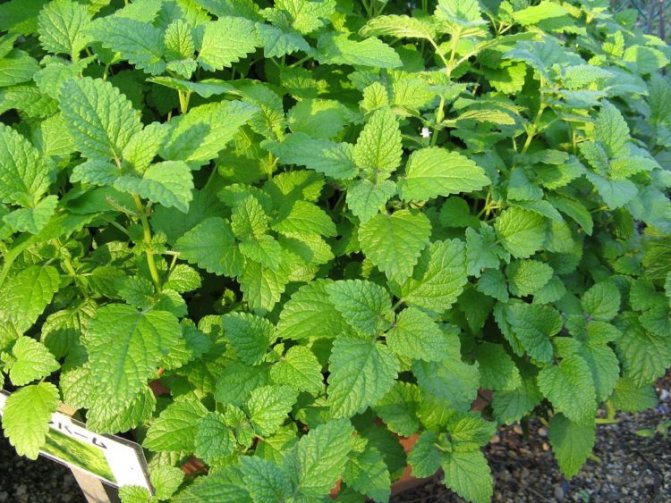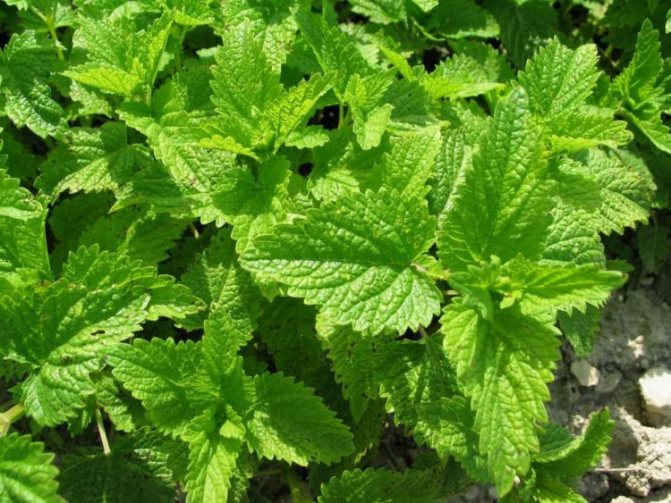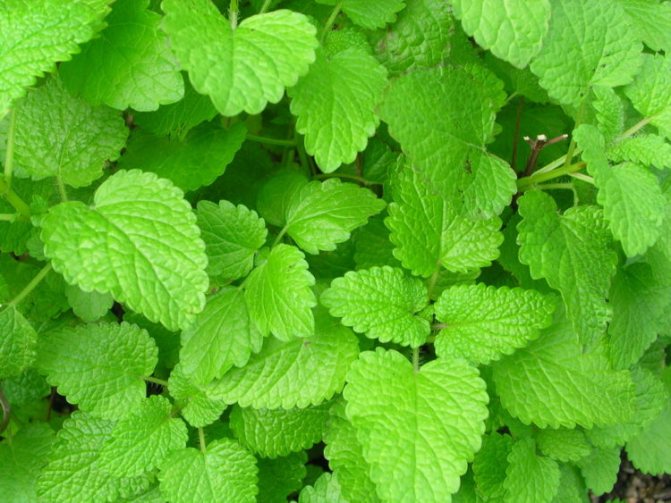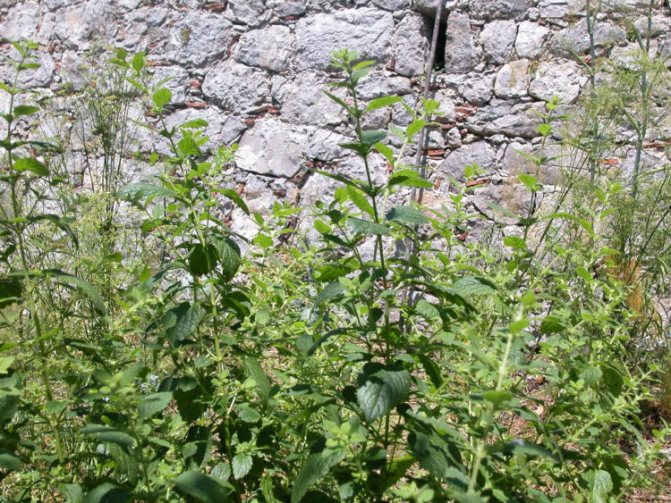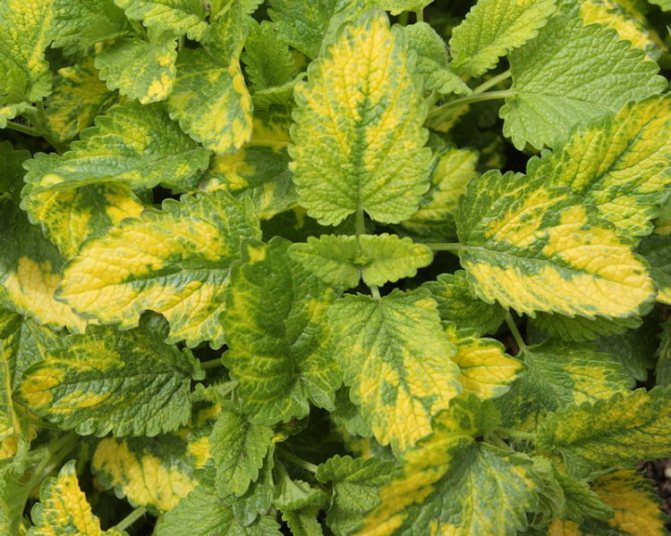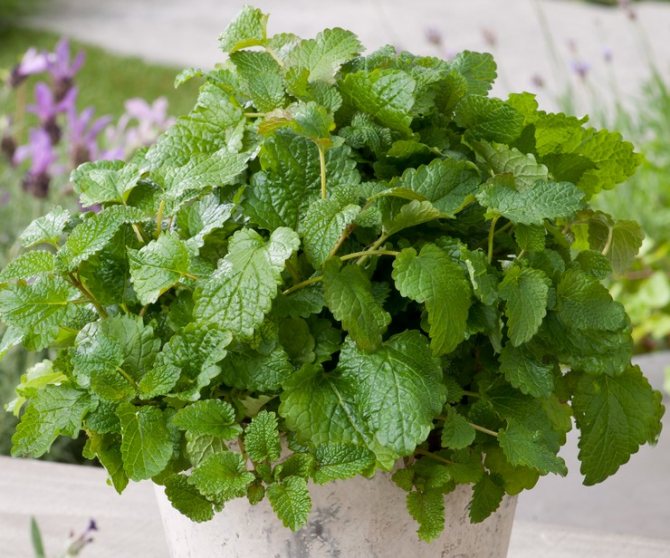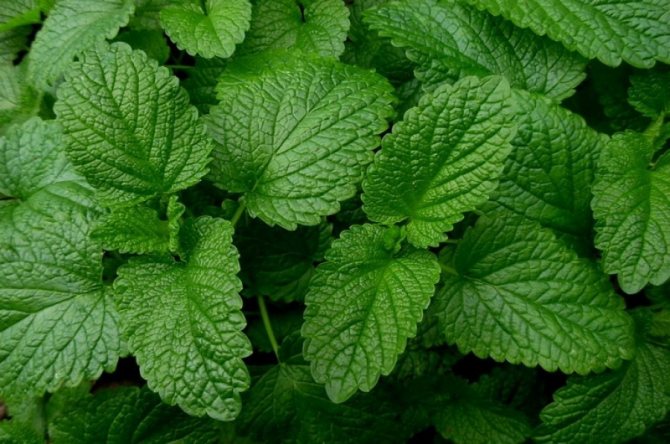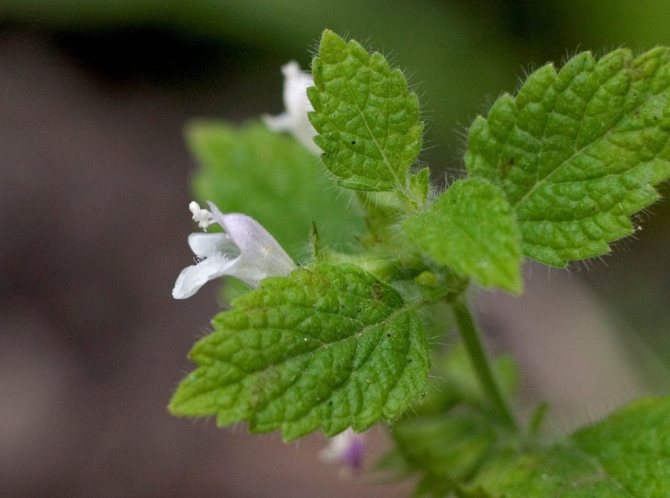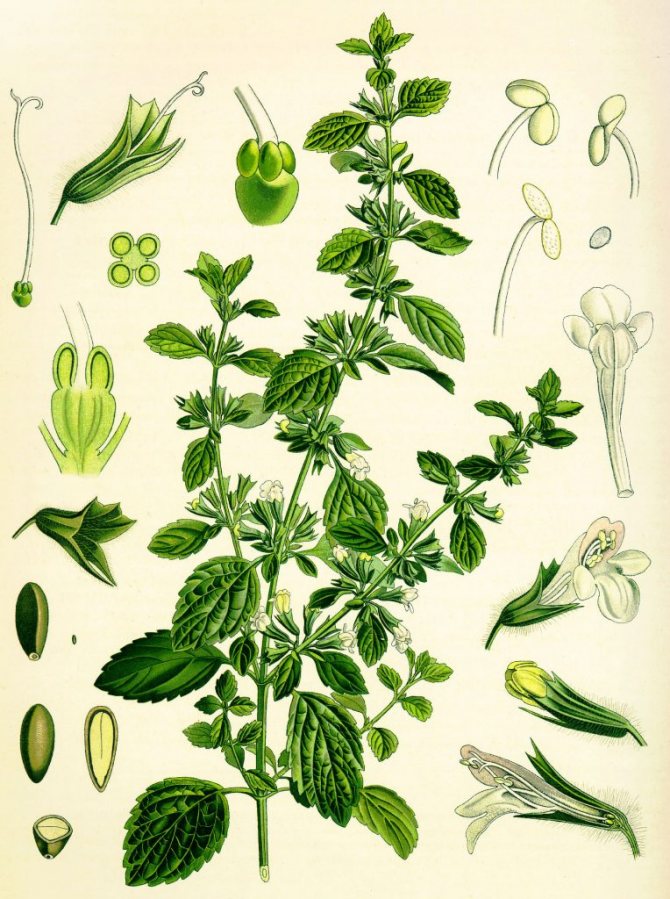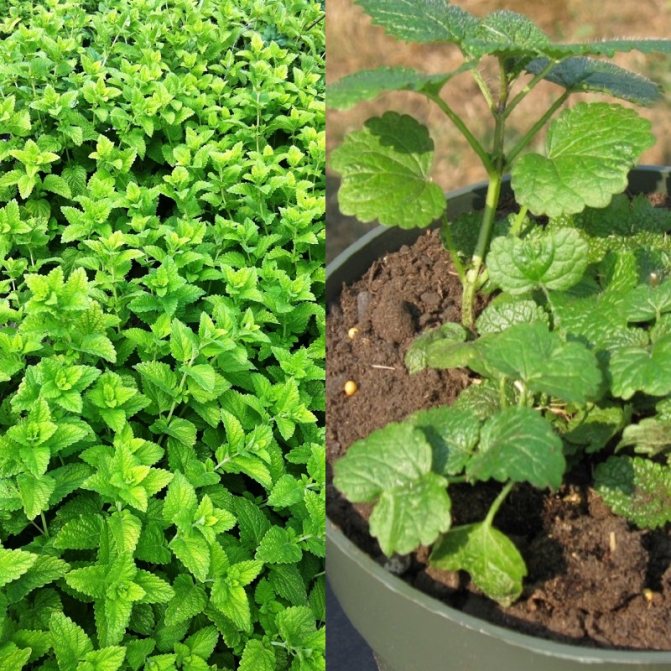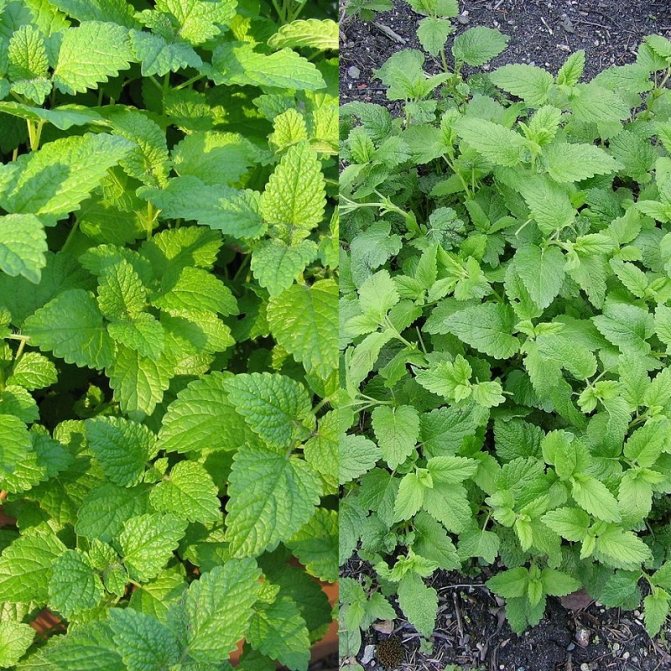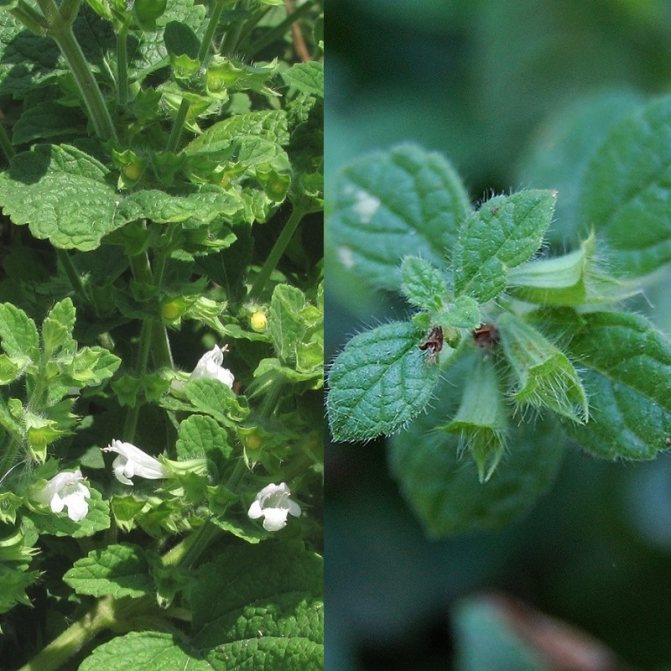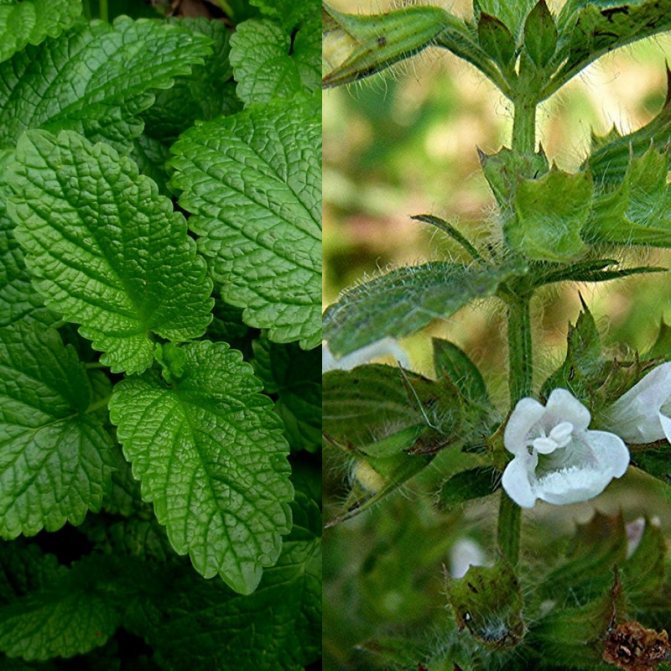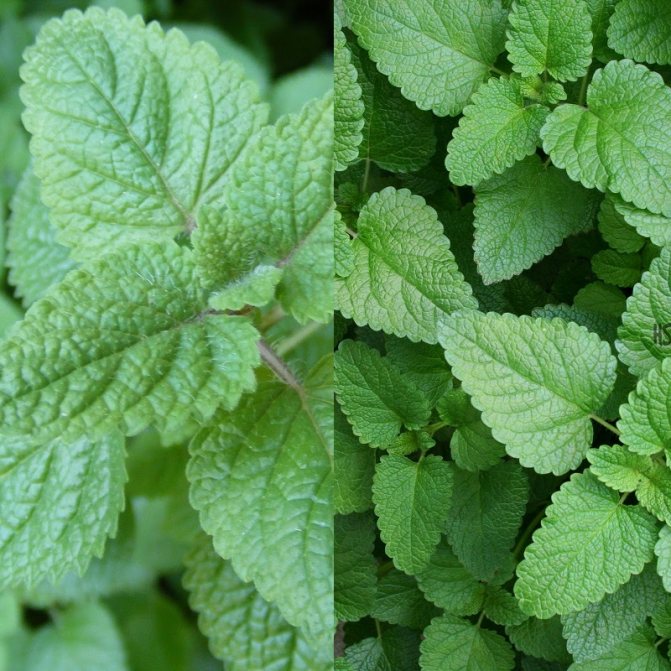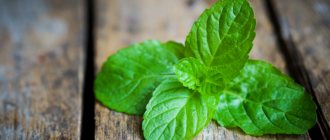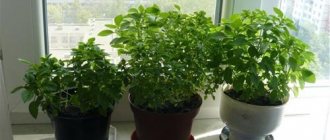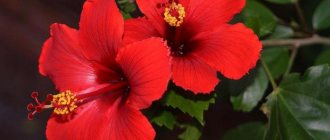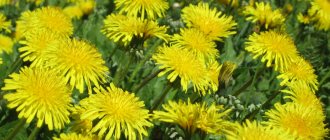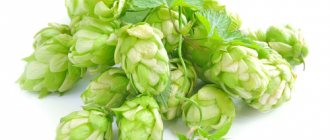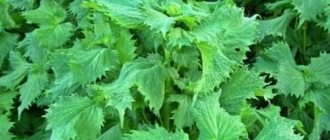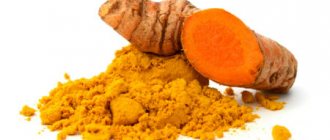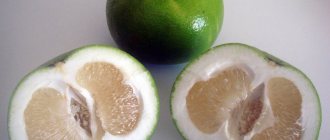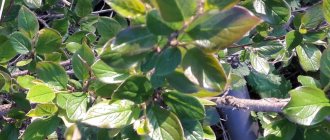Melissa is one of the main melliferous plants in the garden. There are three versions of the origin of the plant name. One of them refers to the Greek words meli - "honey" and phyllon - "leaves", which were given to the plant because of its honey smell. Another is related to mythology. According to her, the nymph, the daughter of King Melissa, fed Zeus with milk and honey and taught people how to get honey. The third version says that she was a beautiful young woman who claimed to be the mistress of the gods. But the goddesses did not like this, and they turned her into a bee.
However, lemon balm has another name.
Description of the plant
Melissa has been used extensively as a medicine and also as a condiment for thousands of years. In modern times, its growth can be observed in Central and Southern Europe, the Caucasus, Asia. Africa and South America.
A characteristic feature of the plant is the light scent of lemon, which is why it is sometimes called lemon balm. It is used as a spice in cuisines around the world. It is added to salads, soups, fish, meat dishes.
In modern pharmacology, a large number of drugs are produced on the basis of lemon balm. The essential oils of the plant are used in perfumery, alcoholic beverages, food and chemical industries.
The branched plant has an erect tetrahedral stem. It blooms with small pinkish flowers. Usually only lemon balm leaves are used.
Lemon balm care
Lemongrass Melissa does not require scrupulous care. Particular attention should be paid to it only in the first year after planting. The rest of the time the grass grows well on its own.
Note! In order for the plant to develop well, the leaves do not turn yellow, the smell does not disappear, it requires renewal every 6 years.
Watering mode
The medicinal herb needs abundant watering only during the first month after germination, and especially on dry days. The rest of the time, watering should be moderate.
Top dressing
Fertilizers are applied to the soil after each cut of the plant. As a top dressing, liquid complex agents are used, which include ammonium nitrate, superphosphate, potassium chloride. Organic fertilizers can be applied to the mulch layer.
Important! Top dressing is carried out only after the lemon balm has flowered.
Varieties
Melissa officinalis has many varieties. The most common are:
- Pearl. It is used for making tea, vinegars, and also as an aromatic additive to alcoholic beverages. The period from planting to harvest is 2 months.
- Isidora. A distinctive feature is the dynamic growth of this plant variety. Flowering occurs in the second year. Has a strong lemon scent.
- Dozya. In one place it is grown up to 5 years. Has a faint lemon scent. Leaves are dark green with jagged edges.
- Quadrille. It is a semi-closed and raised rosette of leaves. Intense aroma comes from lilac flowers.
- Lada. During flowering, flowers of various colors can appear: from cream to dark purple. The bushes are not very tall - up to 60 cm in height.
- Lemon flavor.It grows quickly enough - the crop can be harvested in a month. The bush has a strong rich aroma, so it is most often used as a perfume or tea preparation.
- Freshness. It has dark green leaves with serrated edges; during the flowering period, the flowers grow with a slight bluish tint.
- Tsaritsynskaya Semko. The leaves of this plant variety are small, light green ovoid. They have a distinct characteristic lemon scent. It blooms with white flowers.

Regardless of the variety, the plant has many beneficial properties.
Melissa officinalis - healing benefits and harms
Melissa for women
To maintain women's health, it is good to take medicines based on lemon balm, they will help to normalize the hormonal and emotional background during menopause, relieve stress, and support the body and nervous system during the period of restructuring.
Melissa during pregnancy
You can drink lemon balm for pregnant women, it will soothe the symptoms of toxicosis, tearfulness and anxiety, have an antispasmodic and carminative effect, normalize digestion, and improve sleep. Acceptance of alcoholic tincture during pregnancy is strictly prohibited, since it contains ethyl alcohol and is harmful to the unborn child.
During breastfeeding, lemon balm will increase lactation and improve the quality of milk. To do this, it can be combined with other herbs - oregano, sage, hops, dill, anise and other medicinal plants.
Herb for men
For the stronger sex, drinks with lemon balm have only a positive effect. Treat nervous diseases and disorders, sleep disorders, normalize the work of the heart, stomach and intestines. However, when using them, an important aspect must be taken into account - in case of an overdose, it is possible to dull psychomotor reactions and a decrease in the level of concentration, which can negatively affect the management of transport and mechanisms.
Plant for children
Weed can be given to babies from birth. Herbal infusions and decoctions will calm the baby, improve digestion, remove bloating, cramps, colic and increased gas formation, and help you fall asleep soundly. Drinks with lemon balm will relieve the child's hyperactivity, reduce increased arousal and increase concentration.
Melissa and mint for weight loss
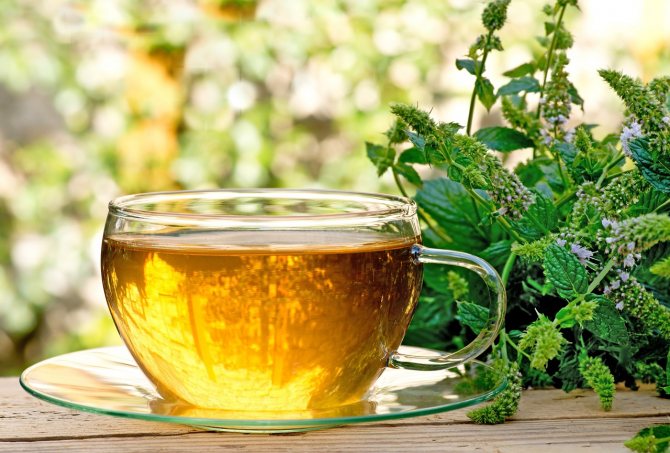

The plant activates and speeds up the work of all digestive organs and has a cleansing effect
The properties of plants to speed up metabolism, metabolic processes and the work of the gastrointestinal tract help to free the body from toxins and toxins, remove excess fluid and get rid of excess weight. For these purposes, taking tea with herbs is well suited, you can add fresh leaves of plants to various salads and snacks, while adhering to a certain diet and not overeating.
To lose weight, it is good to drink freshly brewed green tea with lemon balm and mint every day. It has a laxative and diuretic effect, cleanses the body of harmful processed products and excess fluid.
In cosmetology
The herb is used as a perfume for adding to masks, shampoos, creams, it takes good care of the skin and hair:
- enriches and nourishes the skin, making it elastic and firm;
- activates blood circulation and skin metabolism, improves color, removes excess oily gloss;
- has an anti-inflammatory effect, soothes and cleanses the skin, removes flaking and irritation, acne, acne;
- heals hair, giving it a beautiful shine and splendor;
- relieves dandruff and has a firming effect.
For face
Lemon balm contains rosmarinic acid, which is a natural antioxidant and prevents premature skin aging. This property is widely used in cosmetology for the production of lotions and creams.At home, you can enrich simple face creams with lemon balm essential oil, which will improve their healing composition and medicinal properties, as well as as an aromatic additive.
At home, you can freeze cubes with a decoction of lemon balm, which is useful to care for the skin of the face and décolleté. This will help to increase blood circulation and metabolism, refresh the skin, smooth out fine wrinkles, the procedure will have an anti-inflammatory and antiseptic effect against redness, irritation and acne.
For hair
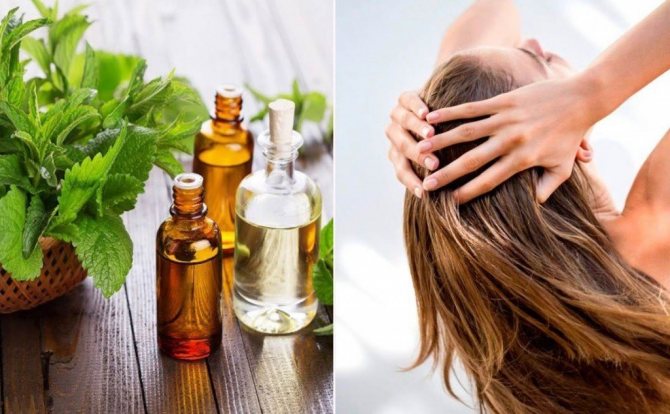

Regular use of medical procedures activates blood circulation and hair growth, strengthens and stops hair loss, gives hair shine and splendor
The use of a plant for caring for hair will make it healthier, add volume and beauty. To achieve these goals, you can:
- enrich conventional hair products with a few drops of lemon balm essential oil;
- rinse your head with lemon balm after washing it;
- rub the essential oil into the hair roots with massaging movements.
Harm
It is not recommended to take funds with lemon balm in the presence of lethargy, lethargy, drowsiness. Cannot be taken simultaneously with other sedative and hypnotic drugs. With abuse, side effects may occur - dizziness, vomiting, nausea, diarrhea.
Growing at home
All varieties of this plant can be grown not only on lawns and personal plots, but also at home. How does indoor lemon balm grow? In order for the leaves of the plant in the flower pot to be more fragrant, you should choose a sunny place. In winter, when there is a lack of such light, you can use a fluorescent lamp. The optimum temperature for lemon balm is + 25 ° C. In such conditions, bright and fragrant leaves grow.
As for the soil for growing room lemon balm, ordinary garden soil is enough for this. After all, the plant is unpretentious to soils. It is better to water the plant 3 times a week, not forgetting that the growing leaves also require moisture. Therefore, spraying from a spray bottle is an integral part of lemon balm care.
Important to remember! In winter, the plant should be sent to a heated balcony or loggia! Conditions will be more comfortable there.
What lemon balm looks like
Lemon balm belongs to the essential oil type of herbal plants. Belongs to the Lamiaceae family. This is a perennial herb that reaches a height of 30 to 120 cm. The main stem is strongly branched, most often covered with a light downy, but it can be bare. The leaves are also covered with fluff, light green, oval in shape with a pronounced relief. She begins to bloom in the second year of life. Inflorescences are umbellate, formed in the leaf axils, the flowers are not symmetrical, the lower petals are longer than the upper ones. The ovary is formed on a pistil surrounded by 4 stamens.
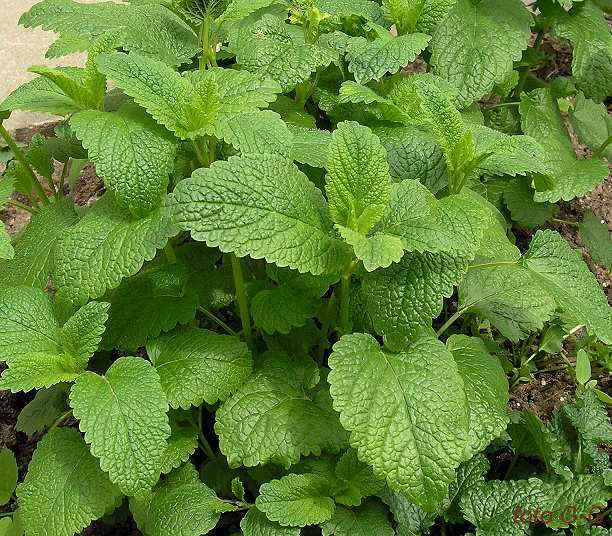

Lemon melissa
Fruits appear 1 month after the flower has been pollinated. The fruit is ovoid, glossy, slightly elongated. There are 4 seeds inside. This herb is named Lemon because it has a pronounced citrus aroma, which is most strongly felt during the ripening of the buds. After the flowers are dry, the smell can become unpleasant.
The difference between lemon balm and mint
Very often people confuse these plants due to the similarity in appearance and taste. But there are significant differences:
- Appearance. Mint, unlike lemon balm, has a straight stem with erect flowers, and the maximum height is slightly higher.
- Aroma. Mint has a distinct menthol odor. It is a good aphrodisiac. Melissa has a lemon scent that is expressed depending on the plant variety.
- Essential oils. The mint plant has a lot more of them. They have a tonic effect on the body.Lemon balm essential oils have a calming effect.
- Growth. Mint is distributed in many regions, it is unpretentious to low temperatures. Melissa is more common in the southern regions. Prefers warmer places.
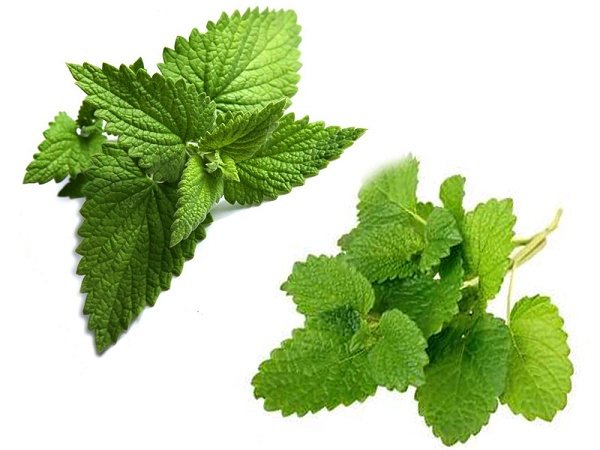

It's important to know! The ability to distinguish these plants will help them to use them correctly! This is a very important aspect when used as a medicine.
Tea
An excellent antibacterial and antiviral agent is green tea with lemon balm added to the tea leaves. In this case, it is advisable to drink it with honey.
Lemon mint is easily grown right in the country and in the garden. It is better if it grows in the shade. Already from May, you can collect the leaves a little bit to add to tea and preparations for the winter.
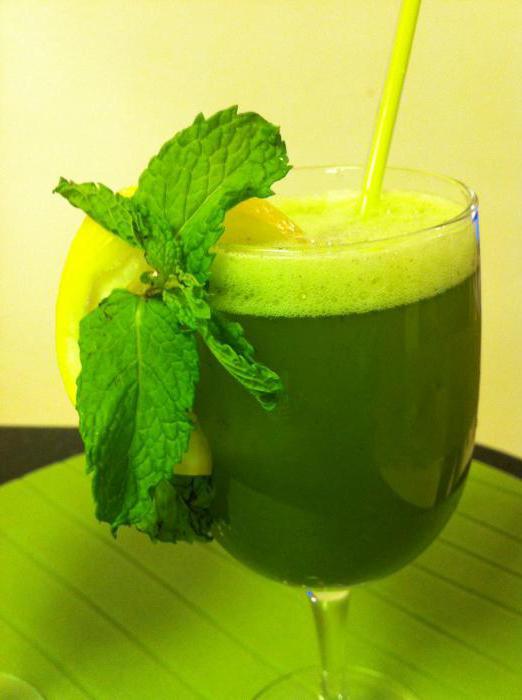

This tea will be useful, but it should be consumed in moderation. Two cups a day is a perfectly normal and acceptable dose.
This drink will not only calm down with a nervous state and invigorate with depression, but will also have a general tonic effect on the body, improving appetite and normalizing cardiac activity.
To prepare it, you must adhere to a number of rules:
- such tea is brewed in porcelain or glass dishes;
- water should be boiled, cooled to about eighty degrees;
- green tea and lemon mint are taken in equal quantities: one teaspoon of ingredients will be enough for one liter of water;
- It is best to consume freshly brewed tea, rather than already used or brewed for too long.
Beneficial features
The versatile benefits of this plant have been known for a long time. It has always been used for the preparation of various decoctions, tinctures and other medicines. After all, it has a sedative, analgesic, anticonvulsant effect. And also the use of lemon balm helps to improve the functioning of the gastrointestinal tract and increase appetite.
In modern times, lemon balm is used to treat the following diseases:
- hypertension and other disorders of the cardiovascular system;
- neurosis;
- bronchial asthma;
- regular headaches;
- sleep disorders;
- painful sensations in the abdominal cavity;
- diseases of the gastrointestinal tract;
- skin rashes or purulent formations;
- anemia.
It is an excellent basis for inhalation, therefore it is actively used in the treatment of colds. It also helps to restore normal hormonal levels in women.
Important to remember! Before using lemon balm as a remedy, you should consult a specialist! After all, it has some contraindications.
When to collect mint and lemon balm
Mint and lemon balm leaves are harvested from June to late August. Leaves are plucked in the morning.
Note! Collecting grass is not recommended after rain, as this can provoke the appearance of root rot. Leaves with stems can be cut from mid-summer. The cuts are made with a secateurs or a knife.
Lemon balm retains all the beneficial properties when the leaves are dried. It is not customary to freeze it. You can dry the grass in the microwave, oven, outside, in the room, etc. Store dry grass for 1-1.5 years. Melissa can not only be added to food as a seasoning, but also fragrant and healthy decoctions and teas can be prepared.
The use of the plant for medicinal purposes
This plant is the basis for the preparation of various medicines that can be made at home. The most common recipes are:
- Infusion. To prepare it, you will need 4 tbsp. l. the original ingredient, which should be poured with 1 cup of boiling water. Insist for 1 hour, then strain. Take 100 ml of the received medication 2 times a day.
- Broth. You should take 1 tbsp. l. of this plant, pour 1 glass of boiling water. Put in a water bath and simmer for about 10 minutes. The cooked broth must be cooled and filtered. Consume 1 tbsp. l.before meals 3 times a day.
- Tea. 3 tsp dried lemon balm should be poured with 1 glass of boiling water. Cool the liquid and take 200 ml 2 times a day - morning and evening.
- Tincture. For cooking, you will need lemon balm and rubbing alcohol. The proportion is 1: 5. Close the container tightly with a lid and leave in a cool, dark place for 1 week.


Important to remember! Observe the dosage of the prepared medicines according to the doctor's recommendation!
Melissa treatment - folk recipes
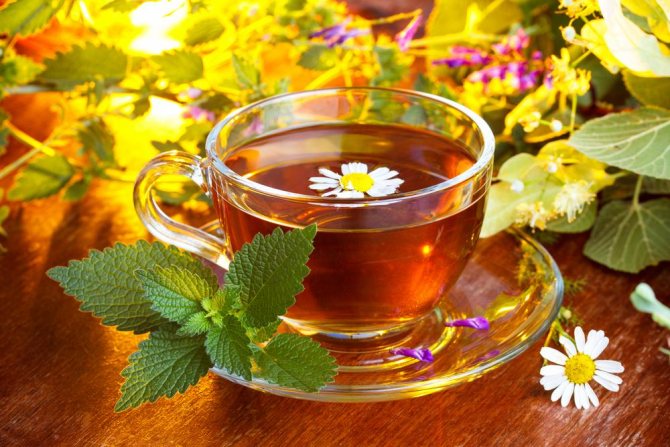

Traditional medicine for the treatment of many diseases involves the use of a plant in combination with other medicinal herbs
With atherosclerosis - take lemon balm, thyme and rue herb (in proportions 4: 3: 3) and mix. The mixture in the amount of one spoon is brewed with a glass of boiling water. The infused and strained drink is drunk during the day. Helps relieve tension, lower blood pressure and blood cholesterol levels.
With poor digestion - fennel, lemon balm will have a positive effect. To do this, take a teaspoon of fennel seeds and lemon balm leaves and brew tea. Helps to establish the digestion process, to activate the work of the stomach and intestines.
For diseases of the respiratory system - prepare a drink with lemon balm and thyme. For its preparation, you need to take herbs in equal quantities and 250 ml. boiling water. Let it brew and take warm. The drink has an antiseptic and anti-inflammatory effect, facilitates breathing, removes mucus and phlegm.
For insomnia - prepare an infusion: pour a few fresh leaves of lemon balm and mint with a glass of boiling water, let it brew and drink warm before going to bed with the addition of honey or sugar.
For colds - brew tea from fresh or dried lemon balm with flowers (a spoonful in a glass of boiling water), insist and take warm with honey and lemon.
With angina - mint, lemon balm, sage will help. I take a teaspoon of each herb, steamed 300 ml. boiling water. It is taken after infusion and filtration in small sips. The infusion has antimicrobial, antiseptic and anti-inflammatory effect.
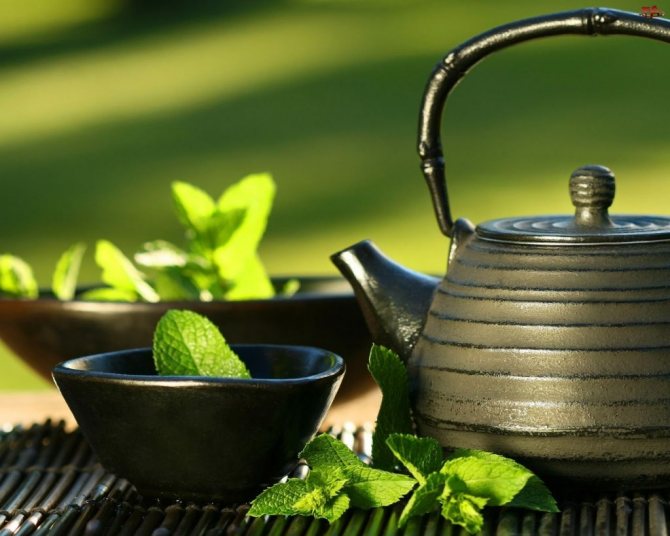

Melissa drinks relieve headaches, joint and muscle pains, cure sore throats and colds
With vegetative-vascular dystonia, a recipe will help in complex therapy: put lemon balm in a thermos, St. John's wort (one spoonful each) and pour a liter of boiling water. The next day, they filter and drink three times 1/2 cup each.
In case of problems with the heartbeat, an infusion is prepared, which has a positive effect on calming neurosis and a rapid heart rate: for its preparation you need valerian, lemon balm, mint, St. John's wort, yarrow (all in a teaspoon), pour half a liter of boiling water and after insisting, take 100 ml ... three times.
With tachycardia - take 300 ml. boiling water, add lemon balm leaves in the amount of a tablespoon, let it brew a little and use three doses per day, 100 ml each.
With neurosis - put lemon balm leaves in the amount of two tablespoons in a container with a glass of boiling water, insist and drink warm in small sips.
With anemia - prepare an infusion of two tablespoons of lemon balm and two glasses of boiling water. Let it brew and take 1/2 cup three times on an empty stomach.
With weak immunity - oregano, mint, lemon balm, wormwood, calamus root, yarrow, pine buds (all in a tablespoon) are taken. The plant mixture is placed in a container with a liter of boiling water, infused and poured into a bath. The herbal bathing procedure will help to cope with physical exhaustion, weak metabolism and immunity.
With toxicosis - chamomile, lemon balm, mint (in proportions 3: 4: 3) are mixed and 4 tbsp. collection spoons are steamed with a liter of boiling water, insist 1/2 hour. Strain and drink a glass every day.
In case of alcohol intoxication - take mint, lemon balm, thyme (a teaspoon each), steamed 400 ml. boiling water, let it brew and drink during the day. The drink has a cleansing and soothing effect, relieves cravings for alcohol.
For hemorrhoids - make microclysters from a glass of warm water and a teaspoon of juice of fresh lemon balm leaves.
Contraindications for use
The main contraindication to use is the individual intolerance of this plant. And also people with such ailments should refrain:
- violations of the hepatic system;
- epilepsy;
- ulcers of the stomach and duodenum;
- diseases of the central nervous system;
- excessive consumption of alcoholic beverages;
- pregnancy and lactation.
It is also better to refrain from using for children under 3 years old. Now you know what lemon balm looks like and what properties it has.
How to grow lemon balm?
To begin with, you should choose a suitable place for lemon balm. Lemon balm is a rather unpretentious plant; it prefers loose, loamy or sandy loam soil, sufficiently fertilized. You should not "settle" bushes near a water source - lemon balm prefers drier places, and from the abundance of moisture it can get sick and die. If you plant lemon balm in the shade of trees, then, of course, it will survive, however, the smell from its leaves will be less intense. Less essential oil will accumulate in greens, namely, it is the most valuable component of lemon balm. And the bushes will not grow so tall and lush. Partial shade is fine.
When choosing a place, be sure to keep in mind that lemon balm is a perennial plant. The bush can live up to ten years! In the fall, dig up the area intended for lemon balm to a depth of twenty centimeters, and fertilize with manure. In the spring, you can take a chance and plant seeds directly in the open field, but this is a risky business. The seeds are planted no deeper than one and a half centimeters. If you plant lemon balm with seeds, then don't expect flowers from it in the first year.
It is most preferable to plant lemon balm seedlings. To do this, around the end of March, sow the seeds in cups or a box and place it on the windowsill.
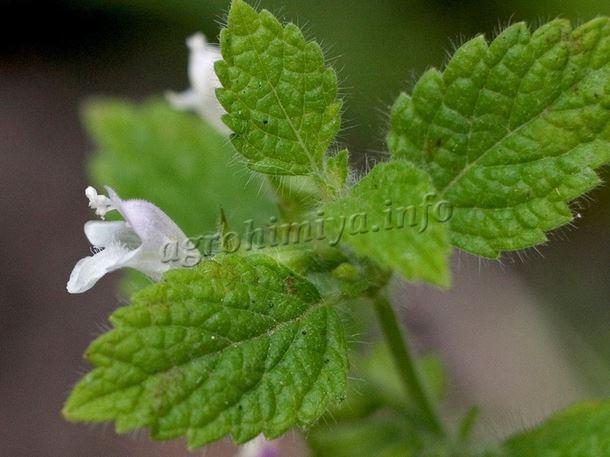

Photo of blooming lemon balm
You can sow lemon balm seeds in a greenhouse. When planting seeds for seedlings, sow them not deep at all, about half a centimeter. Then the seedlings will be more friendly. Discharge the emerging plants so that there is space between them, otherwise they will interfere with each other. There should be gaps of about five centimeters between the shoots. Little melissa loves a lot of light. Keep the box with seedlings on the lightest windowsill, and on warm sunny days, take out to breathe on the balcony. It will not be superfluous to add some nitrogen fertilizers.
Seedlings are planted in open ground at the age of one - one and a half months. Small bushes are afraid of frost, so plant them when the risk of frost is minimal. Bushes are planted at a distance of thirty centimeters from each other, and between the rows it is necessary to leave more space - sixty centimeters. Lemon balm care consists in loosening the soil and removing weeds. Watering should only be done if the summer is very dry. Melissa loves feeding, but do not feed the plant before flowering, as this prevents the seeds from ripening in time.
Gallery: medicinal lemon balm (25 photos)
Butter
The scent of freshly brewed lemon mint spreads instantly everywhere. And this is natural, because it contains a considerable amount of essential oils. They are actively used in cosmetology, homeopathy and medicine.
Oils contain hydrocarbons, alcohol, aldehydes and anti-inflammatory agents.
Even in ancient times, in Rome and Greece, the essential oil of this plant was used as a remedy.
However, in addition to medical purposes, lemon mint is actively used in cosmetology. For example, it has a beneficial effect on the condition of the lips.Regular lubrication with oil prevents crusting and cracking. At the same time, the border of the lips will regain its natural freshness and brightness, and the overall appearance will become even more attractive.
Procurement of raw materials
As noted earlier, lemon balm leaves are most abundant in scent oil during bud formation. The plant smells much less during color and fruit appearance. This must be taken into account when collecting parts of it. Herbalists strongly recommend picking leaves during bud formation, which is different from the usual harvesting time for plants of the same family.
You need to start harvesting by smoothly cutting the stem of at least three pairs of leaves closest to the soil. Drying of the collected grass and leaves takes place in a dark place by laying out the raw materials on paper or in the form of bunches hung from the ceiling. Do not forget to fertilize additional lemon balm thickets after cutting off a part of the plant for raw materials.
Additional harvest can be done in early autumn, thereby preventing growth that can begin during frosts. Note that the frozen grass turns black and absolutely loses all scent. It is already unacceptable to use it for medicinal purposes.
Remember, if you want the most beneficial part of the plant, focus on the leaves. Sometimes, in order to reduce the percentage of impurities in medicinal raw materials, mint is additionally threshed, and the stems are thrown away. The preservation of lemon balm lasts up to 2 years.


Melissa officinalis is rich in various useful substances that can soothe nervous overexcitement, relieve indigestion and even improve visual acuity in humans.
Can mint be frozen for the winter?
Melissa, like other varieties of mint, can be prepared for the winter by freezing both whole shoots and individual leaves.


When frozen, lemon balm completely retains its taste and smell, but the leaves completely lose their shape. Therefore, for the manufacture of such cubes, you can take both greens and juicy stems, having previously chopped them in a blender.
Composition and calorie content of lemon balm
Calorie content: there are about 49 kcal per 100 g of lemon balm.
Food value (per 100 g of product):
- proteins - 3.7 g;
- fats - 0.4 g;
- carbohydrates - 8 g.
Beneficial features lemon mint are due to the essential oil that is part of it. For the first time, the terpene compounds found in lemon balm oil were investigated at the end of the 19th century. Then scientists discovered that the plant is rich in citral and citronelal, as well as geraniol, citronelol, linalool. Citral turned out to be the compound that gives the plant a lemon scent.
The leaves of the first collection are very rich in essential oil. They contain up to 0.29% of the aromatic component. The leaves of the second collection contain up to 0.13% of essential oil, the third - no more than 0.1% of the aromatic component. The amount of oil in dry raw materials depends on the timing of collection, drying technology, grinding and packaging of medicinal herbs.
In the leaves of the censer are phenylcarboxylic acids, chlorogenic acid. The plant is rich in rosemary, ursolic, oleanolic, syringic, synapic, gentisic, protocatechuic and other acids. Lemon balm leaves contain minimal amounts of flavonoids. The leaves contain bitterness, coumarins, tannins, succinic acid, stachyose tetrasaccharide, carotene, vitamins E, C, B2, B1.
Lemon mint: medicinal properties and contraindications
Medicinal and healing properties of lemon balm are quite extensive. In addition to the fact that the plant contains many trace elements necessary for humans, including magnesium, zinc, potassium, molybdenum, selenium, manganese and copper, its aboveground part is actively used for medical purposes:
- oil is used when necessary to relieve spastic conditions, is useful in the treatment of heart disease and the prevention of cancer. Aromatherapy with oil in the treatment of insomnia gives a good result. It is actively used in the treatment of neurological diseases accompanied by irritation, sleep disturbance and increased excitability;
- leafy decoctions, prepared at the rate of 10 g per 500 ml of water and infused for a quarter of an hour, are used in the treatment of almost any nervous disorders that are accompanied by stomach cramps. The active ingredients perfectly cope even with severe headaches of various etiologies and migraine attacks, and also allow to normalize brain processes, including blood circulation;
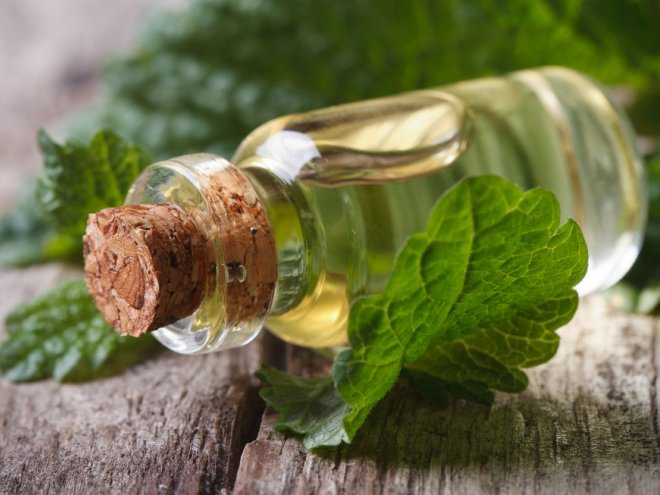

- Decoctions can be used to mildly but very effectively lower blood pressure. There is a good result in the treatment of colds and viral diseases, inflammatory processes in the throat, toothache. The broth can be used as a diaphoretic and diuretic;
- lemon balm infusion helps to improve digestion processes, facilitate the separation of bile, and maintains the performance of the pancreas. Infusions are useful for problems with the intestines, chronic constipation and diseases associated with increased gas production. The main indications for the use of the infusion are chronic gastritis and cholecystitis, as well as chronic pancreatitis and concomitant pathologies.
Lemon balm herb is the main ingredient in medicinal medicinal products, the use of which is aimed at getting rid of asthma, tachycardia and coronary heart disease, as well as anemia. Low hypoglycemic index allows using lemon balm in diet drinks.
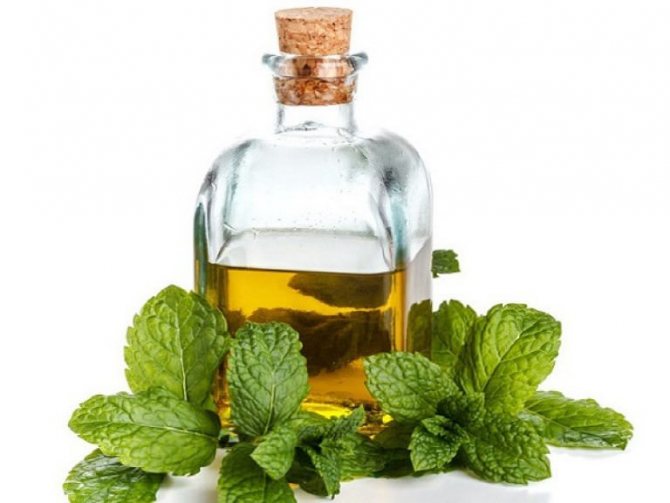

Has lemon balm and some harmful properties, therefore, the conditions expressed by:
- individual intolerance to the main active ingredients;
- low or prone to low blood pressure;
- ulcerative and erosive lesions of the mucous membrane of the stomach and duodenum;
- epilepsy;
- severe lesions of the central nervous system;
- liver diseases.
Lemon mint is prohibited in the treatment of preschool children. Chronic alcoholism is also a contraindication. Side effects if misused can be dizziness, hypotensive manifestations or a decrease in blood pressure and severe weakness. In the most severe cases, loss of consciousness is observed.
Planting lemon balm in the open field


Growing from seeds
Gardeners mostly cultivate lemon balm from seeds or grow the plant vegetatively. In order for lemon balm to take root better when planted in the open field, seedlings are first grown. In spring, wooden boxes are filled with drained fertile garden substrate, and seeds are distributed from above, trying not to thicken the sowing. The embedment depth of the material should not exceed 5 mm. The greenhouse effect can be created using plastic wrap, which is covered with containers, waiting for the first green shoots to appear. Every day, crops are moistened with a spray bottle and ventilated to get rid of condensation.
Under favorable conditions, seedlings begin to appear 20 days after sowing. Seedlings that are heavily thickened are thinned out, keeping an interval between the bushes of 5 cm. The boxes should be in a well-lit room. It is recommended to place them on windowsills overlooking the south or east side of the building. After a few weeks, lemon balm seedlings are fed using nitrogen mineral fertilizers. When the shoots reach ten centimeters in height, the bushes are pinched.
Three- or four-year-old bushes are transplanted, dividing into parts. The division is carried out in May or August, when the flowering process ends.The rhizome is carefully removed from the soil, shaken off the ground and cut into equal shares so that one division contains several healthy shoots and roots. Separated lemon balm bushes are planted in open ground in a previously prepared area. The renewed grass blooms in a year and easily adapts to a new place.
In addition to breeding lemon balm by cuttings, cuttings are used. To do this, make harvesting of green shoots of grass throughout the summer. To make the cuttings root faster, they are kept in water, and then transferred to loose fertile soil. Cuttings take root, as a rule, within 3 or 4 weeks.
Interchangeability


Since plants have different flavors, replacing one with another when cooking is akin to a taste experiment.
Some culinary experts still dare to do this, for example, in the composition of "Mojito" or lemonade, they often put lemon balm instead of mint.
It is necessary to do this only in extreme cases: mint is more aromatic and sweet, lemon balm has a spicy-tart taste.
If you put lemon balm instead of mint in dessert, then it is quite possible that it will taste bitter., because it is sometimes replaced by allspice.
Planting and leaving
Melissa can be called an unpretentious, even tenacious plant that requires very little care. A bush can grow in one place for a whole decade, but gradually its appearance begins to deteriorate and its resistance to cold and disease decreases. Therefore, transplantation and rejuvenation are carried out already from the sixth year of life. Planting work should be carried out at the very end of spring, when the cold is over, because young plants are very sensitive to them.


For lemon grass, areas that are well lit, but protected from cold winds, are chosen. Loose nutrient soils with a neutral or slightly acidic reaction are suitable. Lemon balm grows best on loams and sandy loams. The soil is pre-dug up, large clods are broken, and roots and weeds are also removed. River sand, broken brick or crushed stone are additionally introduced into heavy soil. Lemon balm grows strongly, so the distance between plants should be 25-30 cm (for high varieties 40 cm and more).
Adult specimens practically do not need care, as they are distinguished by great endurance. However, in the first year of life, you will need to regularly pay attention to the plant. In dry and hot weather, abundant watering is needed, but without stagnation of water at the roots. After irrigation, the soil is loosened and the weeds are immediately removed. So that the soil is not taken by the crust, it is mulched near the plants to a height of about 5 cm.
As soon as the shoots begin to bloom, the harvest is carried out. Usually all vegetation is cut to a height of 10 cm above the ground. Most modern varieties are capable of producing up to four harvests per season.
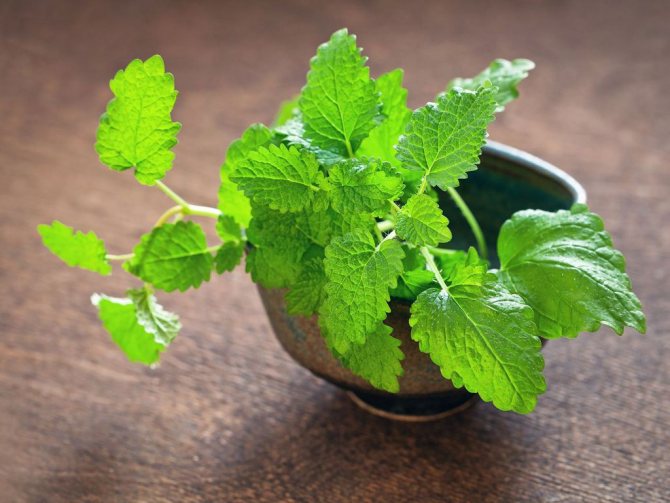

Immediately after pruning, top dressing is carried out with liquid mineral complexes (superphosphate, ammonium nitrate, potassium chloride). Do not fertilize before flowering. It is useful to use organic from time to time.
Melissa is frost resistant. If there is sufficient snow cover, she is not afraid of any cold weather, but if snow is not expected, the soil at the roots is mulched with fallen leaves. With aging (from 6 years of age), winter hardiness gradually decreases, which can lead to freezing of plants.
With proper care, pests and diseases of plants are not terrible for lemon balm. If the insects have settled on the twigs, you can try to get rid of them with soapy water and bathing in a hot shower. When using insecticides, the harvested crop cannot be used for food.


How to grow medicinal lemon balm in a pot
Medicinal lemon balm is often confused with catnip, but unlike it, this plant is less resistant to frost. Therefore, in some regions, perennials are extremely rare.For this reason, skilled housewives and flower growers grow lemon balm at home in pots in order to obtain useful medicinal raw materials throughout the year. Care for a domesticated plant is minimal, which includes only two important conditions: timely watering and good lighting.
For those who come across this herb with medicinal lemon balm for the first time, it is worth knowing some of the nuances of growing such a plant at home, and which ones, we will figure it out together further.
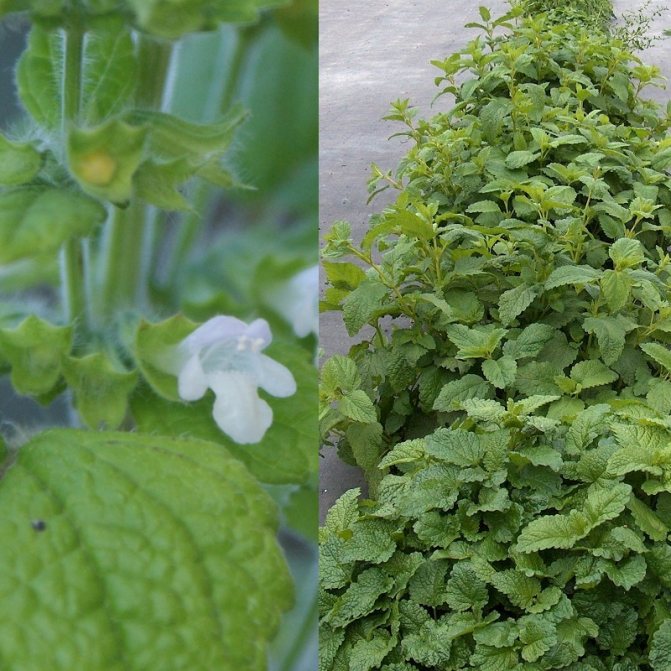

In general, those who first encounter useful house plants try to grow lemon balm in a pot. To do this, purchase seeds in winter. Planting material should be as fresh as possible, as it gradually loses its germination over 2-3 years. Even in the flower shop, pay attention to the packaging time indicated on the label. Lemon balm seeds do not need long-term stratification, therefore they are sown in March in a nutritious soil.
Let's prepare the substrate. Lemon balm needs a very nutritious “tasty” composition. Take soil from your plot or universal soil and add some compost or leaf humus to it. Also, in order for the mixture to be light and breathable, add some of the peat and river sand. The nutritional composition must be calcined in the oven for 20 minutes at a temperature of 120-130 degrees. Instead, you can spill the mixture with a manganese solution, in any case, you need to disinfect the ground.
In a layer about 15-20 cm high, place the nutrient medium in a container made of food grade plastic or wood with large drainage holes. Sprinkle with a small layer of vermiculite on top. In general, this is a very useful substance. It has the following qualities: it disinfects and absorbs moisture during overflows. At the same time, it does not dry the soil and plays a more decorative role, since bare ground does not always look attractive.
How many varieties are there?
Melissa is an essential oil herb.:
- The main species successfully cultivated in Russia is lemon balm.
- Melissa axillaris is a species common in China, the Himalayas, Java and the island of Sumatra.
- Melissa flava - habitat - Tibet, Nepal, Bhutan, eastern India.
- Melissa younanensis and Melissa bicornis grow in Tibet and Yunnan.
There are more than fifty varieties of this plant.
An interesting fact - the cultivation of lemon balm acquired a large scale after Charlemagne gave the order to grow this plant in his gardens to all active monasteries.
Application
In medicine.
Melissa medicinal began to be used as a medicinal herb more than 200 centuries ago. It was grown in Rome and Ancient Greece. It has become widespread as a valuable honey plant. Dioscorides wrote that beekeepers smeared their bodies with the juice of fresh lemongrass leaves to attract a swarm of bees.
In folk medicine, lemon balm was used as an antimicrobial, sedative and anti-dysentery agent. It has also been used to normalize vision and menstrual periods. Avicenna wrote that bee mint strengthens the heart, improves digestion and eliminates hiccups. He suggested using this herb as a tonic healing agent.
The benefits of lemon balm were discussed in the Middle Ages. So, the German healer Saint Hildegrada recommended using lemon mint for migraines, and Serafit argued that the leaves of the plant would help to cope with bad mood and fear. The Polish physician Sireniusz suggested using bee mint to combat headache or heartache, as well as for gastrointestinal spasms.
French monks prepared a drink with mint, lemon balm, lemon peel, coriander seeds, nutmeg and cinnamon. They called this remedy "Carmelite lemon balm water" and used it to treat ailments of the nervous system.
In Russia, lemon balm decoctions were taken for stomach cramps, cholelithiasis, cholecystitis, migraine, insomnia, nervous diseases, toothache, respiratory ailments, halitosis, algomenorrhea, dysmenorrhea, vomiting, fluid retention in the body and to increase lactation.
The pharmaceutical industry produces medicines based on lemon balm. They have pronounced sedative, carminative and antispasmodic properties. Eating bee mint helps you fall asleep faster, which is why it is part of the remedies designed to fight insomnia.
For therapeutic purposes, lemon balm leaves are usually combined with other herbs (mint, cumin, valerian, hyssop, lavender, hawthorn). For the prevention of diseases, salads from young foliage are used.
In cooking
Dry lemon balm leaves are added to tea for flavoring. Fresh and dry leaves are used to season various dishes. Bee mint is widely used in the alcoholic beverage industry. The inhabitants of Denmark add this herb to canned meat.
Description of medicinal lemon balm and photos
Ancient philosophers often wrote descriptions of medicinal herbs of that time, and lemon balm was no exception. The medicinal species or in Latin “Officialis” is a species of the genus Melissa, which belongs to the Lamiaceae family. People often confuse plants with other representatives of the genera, namely mint. This is confirmed by the fact that lemon balm is often called "lemon mint". The similarities between the two different plants can be seen even in the photos of the representatives.
Perennial grasses are very widespread. But, initially, botanists say that the plant appeared in the Mediterranean and from there spread throughout the world.
Melissa Medicinal belongs to perennial, most often wild-growing herbs and has a number of outstanding medicinal properties. Perennials grow in height from 20 to 130 cm. They have long erect stems. Tetrahedral shoots are well branched and can be pubescent, glandular, soft hairs.
The leaves are rounded-rhombic or ovoid. They are covered with fine hairs. On the stems they have opposite arrangement. Leaves are attached to the shoots with long petioles. The edge of the plate is crenate. Some inexperienced botanists may confuse lemon balm with nettle due to the fact that the entire tops are covered with fine hairs, which are less glandular.
In the false rings are collected unremarkable lemon balm flowers of 6-12 pieces. The lower petals of the calyx are subulate with large teeth. It has long glandular hairs. The corolla of the plant is bluish, white or lavender. It has exactly 4 stamens and a pistil with a long column and a quadruple-divided ovary at the top. Flowering occurs throughout the summer, at the beginning of September the fruits begin to ripen. These are nuts with large seeds that are able to maintain their initial germination for about 2-3 years.
1. Seven Secrets of Success:
| 1. Growing temperature: during the growing season, cultivation at normal room temperature in the range of 16 to 24 ° C. The winter dormant period should take place at a temperature of 5 - 7 ° C. |
| 2. Lighting: Well-lit location shaded from direct sunlight. |
| 3. Watering and humidity: Abundant bottom watering in spring and summer with light drying of the substrate in between. in autumn and winter they are watered much less frequently. The humidity can be increased by using a wet pebble tray or a room humidifier. |
| 4. Pruning: in spring and summer 2 - 3 times per season too long shoots of lemon balm are cut almost to the very base - the flower easily tolerates pruning and quickly grows back again. |
| 5. Priming: tolerates a wide range of soil conditions and easily adapts to a wide variety of substrates. |
| 6. Top dressing: in spring and summer with mineral fertilizers or organic matter once a month. In autumn and winter, you do not need to feed the flower. |
| 7. Reproduction: by rooting half-ripe stem cuttings in spring and summer, dividing during spring transplanting, sowing seeds in spring. |
Botanical name: Melissa.
Melissa plant - family... Lipoids.
Origin... Mediterranean.


Description. Melissa - a perennial plant, in which, when frost occurs, the entire ground part dies off, and in spring the plant begins to grow again from the underground root. Stems erect, branched, covered with pubescence. The leaves are arranged opposite, oblong-oval or lanceolate, up to 7 cm long, with pronounced veins, green, also covered with delicate pubescence, when damaged, they emit a very pleasant mint or lemon aroma. The edges of the leaf plates have small notches. In the summer months, small nondescript flowers appear in the leaf axils - white or lilac, male and female. There are attractive variegated plant forms.
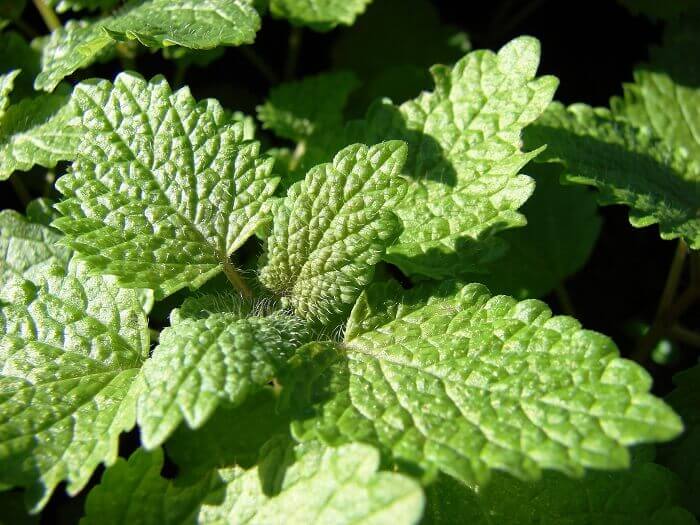

Height... 70 - 150 cm, growing rapidly.
Application in other fields
The essential oil squeezed from the leaves serves as an effective anti-acne agent in cosmetology. It can also be used when taking a bath as a remedy against excessive oily hair. An additional positive effect will be complete getting rid of dandruff.
In the culinary arts, this plant can be found everywhere and in any form, from salad dressing to an elegant touch for dessert. It is often added to various cocktails. Gourmets often add it to meat and fish dishes, mushrooms and pickles. The piquancy of its aroma and useful properties will not spoil any dish, but will only add taste and chic to them. As a spice, the herb is incorporated into compotes, home-made beer and wine, making them outstanding and invigorating drinks.
However, housewives should remember that lemon balm should be used very carefully and not overdo it. Throwing too much into a dish will ruin the taste. Another point to be aware of is that the grass loses its unsurpassed odor, especially when exposed to temperature. Based on this, try to add leaves at the end of cooking, so the food will take on the scent of the herb and become more appetizing.


